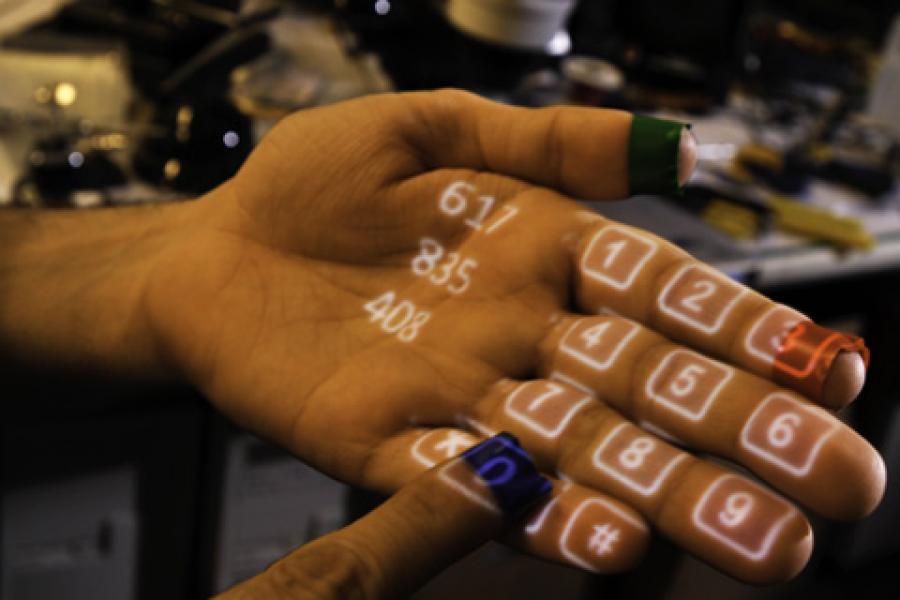
Jul 6, 2016
Blog Digital World Innovation in AR & VR Technology Driving Huge Demand for Products
Virtual reality (VR) and augmented reality (AR) technologies are growing in popularity as they finally emerge from the lab into applications for everyday life. New technology such as Google Glass, head-up displays (HUDs) and head-mounted displays (HMDs) are driving innovation in the development and usage of VR and AR.
Early last June, the first holographic email and calendaring apps, Outlook Mail and Calendar, were brought to Microsoft HoloLens—the first fully self-contained holographic computer. With Outlook Mail on HoloLens, users can place their inbox on their office wall while simultaneously interacting with other digital content in their real world.
The new wall calendar also allows users to see their agenda for the day. Because Outlook Mail and Calendar apps are built on the Universal Windows Platform (UWP), the experience will seem familiar to users already using Windows 10 PCs, tablets and phones.
WHAT ARE VIRTUAL AND AUGMENTED REALITY TECHNOLOGIES?
Virtual reality technologies are used in the creation of environments that are presented to users’ senses in a manner that they experience these environments as if they were really there. The technologies are used for entertainment as well as business or military applications. With growing utilization, the technologies are becoming more affordable, says Sinha Guarav, a BCC Research analyst.
Augmented reality technologies are used to create a blend of virtual and real environments. AR allows users to interact with virtual applications in real-world settings. Unlike VR, AR users are able to distinguish between the virtual and real environments. AR technology advancements are enabling new applications in fields such as healthcare, education, military, gaming and industrial training.
OEM DEDICATED CROSS-DEVICE PLATORMS OPENING MARKETS
Microsoft also announced that its Windows Holographic, the operating system powering Microsoft's HoloLens headset, will be open to OEMs and other AR and mixed reality devices like the HoloLens, as well as fully immersive VR headsets such as the Oculus Rift and HTC Vive.
This means that rather than simply being gaming peripherals, these headsets could soon run on a dedicated cross-device platform. This is significant, as Windows Holographic uses the Universal Windows App protocol.
Windows Holographic is part of the OneCore Windows 10 platform, and offers a holographic shell and interaction model, including gesture and voice commands as well as "perception APIs and Xbox Live services,” according to the announcement.
Microsoft claims that there are hundreds of pre-existing apps that can already be run on Windows Holographic, thereby eliminating the ecosystem problems that plagued Windows Phone.
"We are excited to be working with Intel, AMD, Qualcomm, HTC, Acer, ASUS, CyberPowerPC, Dell, Falcon Northwest, HP, iBuyPower, Lenovo, MSI and many others supporting great virtual reality experiences on Windows 10," the company said in a blog post. “We are looking forward to opening up Windows Holographic to the partner ecosystem for the future."
WEARABLE AR TECHNOLOGY BECOMING A REALITY
Guarav anticipates the market for AR and VR hardware components to reach $33.5 billion by 2020, growing at a five-year compound annual growth rate (CAGR) of 70.6%. A big part of this growth can be attributed to the increase in demand for smarter glasses and helmets. Products as Google Glass, Google Cardboard, Oculus Rift, Augmented Reality Smart Helmet, Microsoft HoloLens and Sony SmartEyeglass are stimulating the demand for AR technology, he says.
The Oculus Rift VR HTC’s Vive platforms both require a powerful PC and can display 90 frames of VR content per second. At 2016 CES, Smartphone-based VR debuted in the form of Samsung’s Gear VR. Samsung Galaxy smartphone users can snap on a headset to partake in VR applications on their phones. Even more affordable was Google Cardboard, from Google’s Alphabet subsidiary. Cardboard is a do-it-yourself VR viewer with instructions available on a related website.
“Smart watches, AR headsets and hand-worn terminals are some of the products that will experience high growth. AR headsets will find application in the rapidly growing gaming sector as well as in the industrial and military sectors,” Guarav says. “Wearable AR technology is being adapted across a wide range of sectors, including the medical, retail, military and construction industries.”
Revenues from selling VR and AR products were $4.5 billion in 2014 and are expected to reach $105.2 billion in 2020, at a five-year CAGR of 67.0% from 2015 through 2020. The gaming industry dominated the overall 2014 VR and AR market with a 31.2% share, followed by the military with a 23.4% share. The education sector is the fastest-growing segment, with an expected CAGR of 72.3% from 2015 through 2020.

From smartphones to satellites, antennas play a vital role in enabling the seaml...

Introduction Artificial Intelligence (AI) and the Internet of Things (IoT) are r...

We are your trusted research partner, providing actionable insights and custom consulting across life sciences, advanced materials, and technology. Allow BCC Research to nurture your smartest business decisions today, tomorrow, and beyond.
Contact UsBCC Research provides objective, unbiased measurement and assessment of market opportunities with detailed market research reports. Our experienced industry analysts assess growth opportunities, market sizing, technologies, applications, supply chains and companies with the singular goal of helping you make informed business decisions, free of noise and hype.